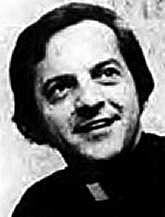Dead Priests Accused of Abusing Kids Likely "Reside in Hell," Lawsuits Assert
By Jay Tokasz
Weisbeck did not respond Friday to a request for comment on why the paragraph was included in the three lawsuits. The same paragraph was included in cases alleging abuse by Monsignor Michael J. Harrington, the Rev. Stanley D. Idziak and the Rev. Howard Slack – all of whom are deceased. The paragraph was not included in three other cases filed this week by the same firm alleging abuse by three priests who are alive and named as defendants along with the diocese. Harrington, who was the pastor of Immaculate Conception Church on Edward Street for 25 years until retiring in 1985, is accused of molesting a 10-year-old boy in 1978. The abuse is alleged to have continued sometime in 1981. The anonymous plaintiff is now 51 and is identified in the lawsuit as LG 19 DOE of North Tonawanda. Harrington died in 1989 at age 79. The Buffalo Diocese in 2018 acknowledged that Harrington had credible child sex abuse allegations against him. Harrington was named as an alleged abuser in another lawsuit that was filed by Angelo Ervolino on Aug. 14.
Idziak, who was a Pallottine Order priest, is accused in the lawsuit of sexually assaulting a boy starting from the age of 5 in various locations in North Tonawanda, where the priest was assigned at Our Lady of Czestochowa Church and the Catholic Apostolate Center. The abuse is alleged to have happened from 1963 to 1973. The anonymous plaintiff is now 61 and lives in Coconut Creek, Fla. Idziak transferred in 1978 to a church near Atlanta, Ga., and the Atlanta Archdiocese paid $570,000 to settle a 1991 lawsuit over sexual abuse filed by a Georgia family that accused Idziak of sexually abusing their two sons. Idziak was laicized, or discharged as a priest, in 1993 because of the allegations raised against him in Georgia. Slack is accused of molesting a 15-year-old boy in 1964 and 1965 when the priest was assigned to Immaculate Conception Church on Edward Street. The anonymous plaintiff is now 70 and lives in Amherst.
|
.
Any original material on these pages is copyright © BishopAccountability.org 2004. Reproduce freely with attribution.

